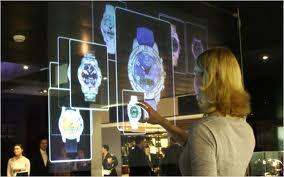Introduction: Virtual audiovisual technology and its methodology has yet to be established for psychoacoustic research. This study examined the effects of different audiovisual conditions on preference when listening to multi-talker conversations. The study's goal is to explore and assess audiovisual technologies in the context of hearing research. Methods: The participants listened to audiovisual conversations between four talkers. Two displays were tested and compared: a curved screen (CS) and a head-mounted display (HMD). Using three visual conditions (audio-only, virtual characters and video recordings), three groups of participants were tested: seventeen young normal-hearing, ten older normal-hearing, and ten older hearing-impaired listeners. Results: Open interviews showed that the CS was preferred over the HMD for older normal-hearing participants and that video recordings were the preferred visual condition. Young and older hearing-impaired participants did not show a preference between the CS and the HMD. Conclusions: CSs and video recordings should be the preferred audiovisual setup of laboratories and clinics, although HMDs and virtual characters can be used for hearing research when necessary and suitable.
翻译:研究的目的是在听力研究中探讨和评估视听技术; 方法:参与者听取了四位谈话者之间的视听对话; 测试和比较了两个显示器:曲线屏幕(CS)和头顶显示器(HMD); 使用三种视觉条件(只听音频、虚拟字符和录像),对三组参与者进行了测试:十七名年轻人正常听觉、十名老人正常听觉和十名听力障碍者; 结果:公开访谈显示,较老的正常听觉参与者更喜欢听觉技术,录像是更喜欢的视觉条件; 年轻和年长的听力障碍参与者没有表现出CS和HMD之间的偏好; 结论:CS和录像应该是实验室和诊所的首选视听设置,尽管必要时和适当时,可以使用HMD和虚拟人物进行听力研究。




